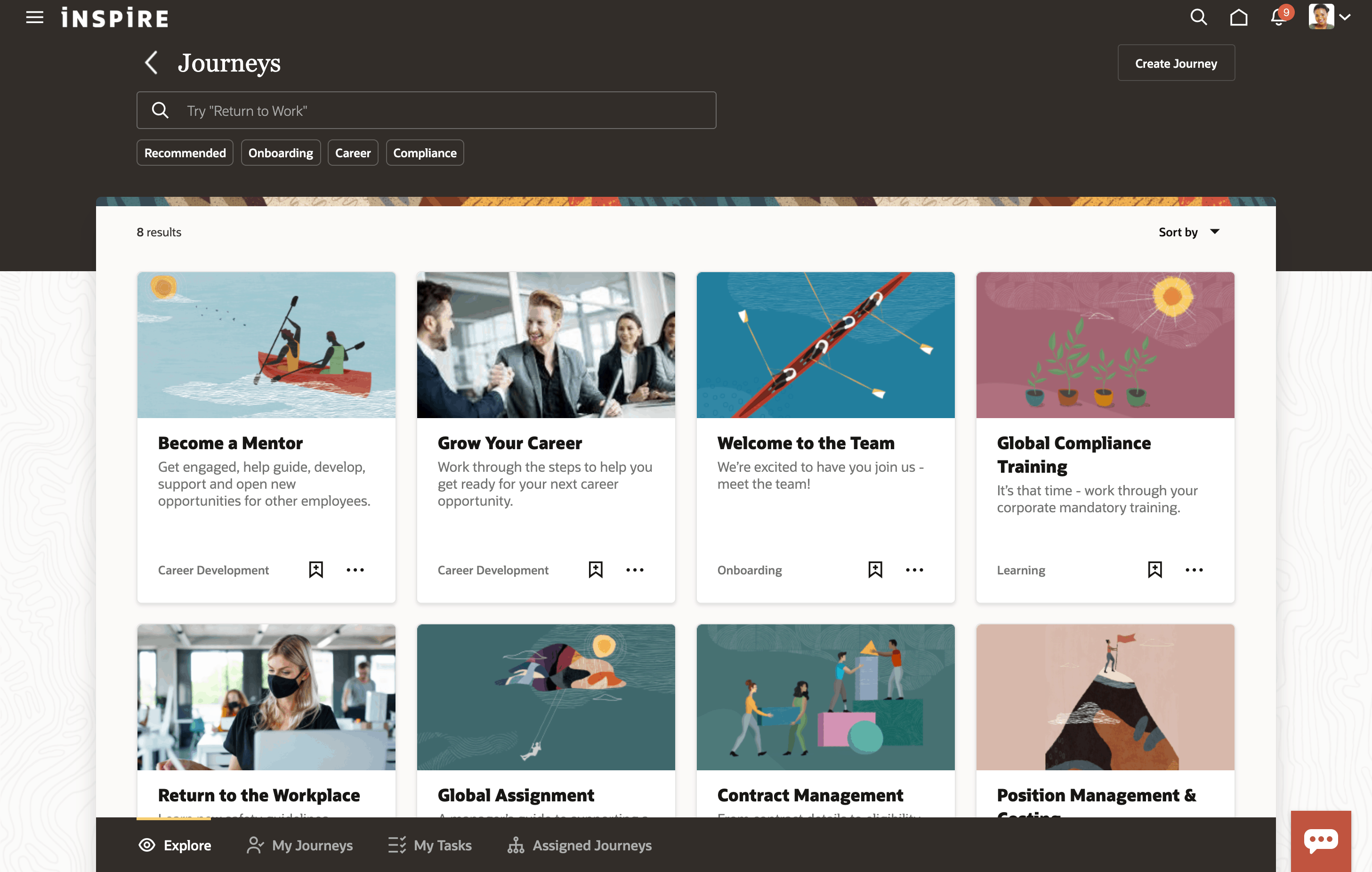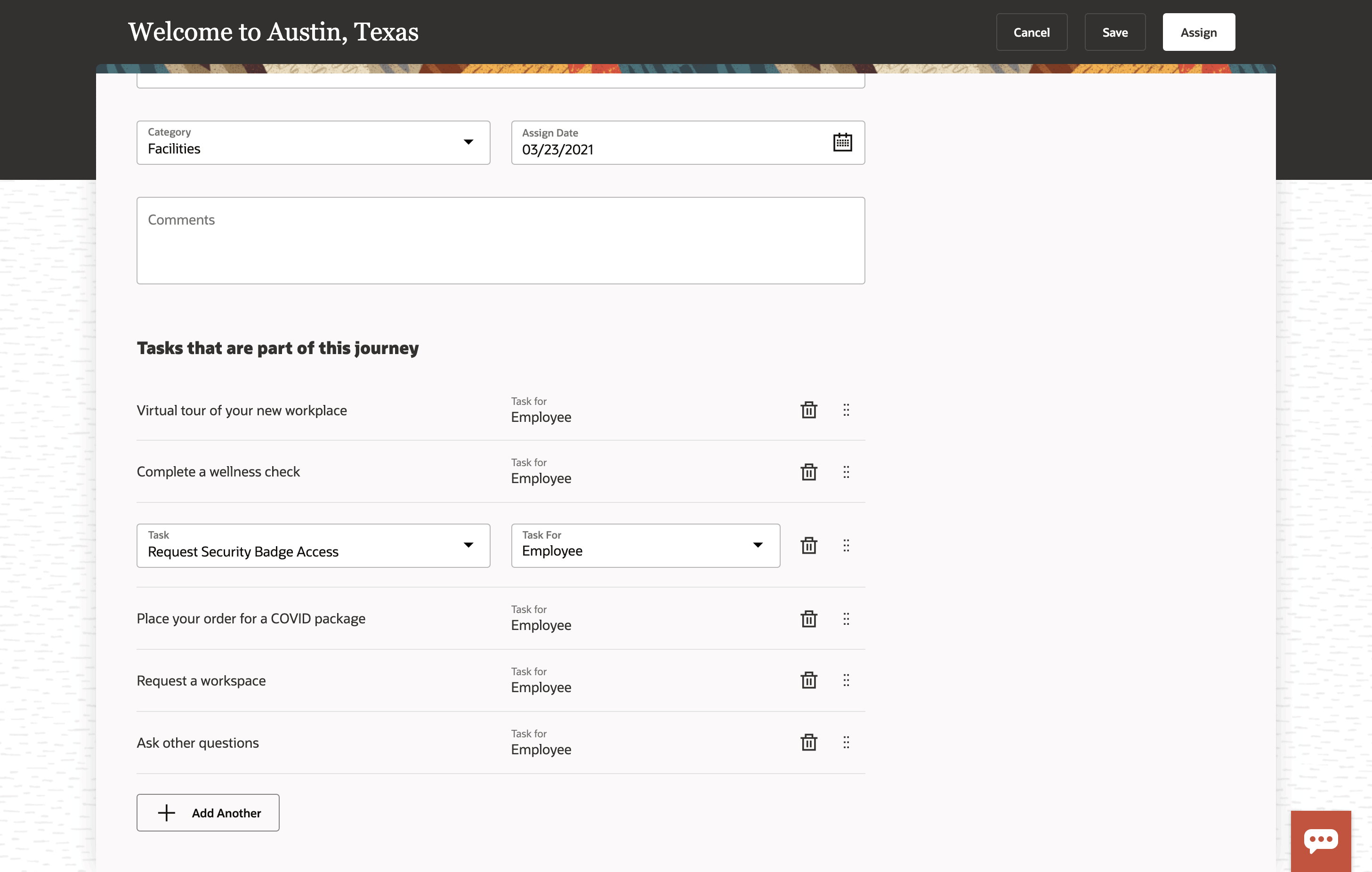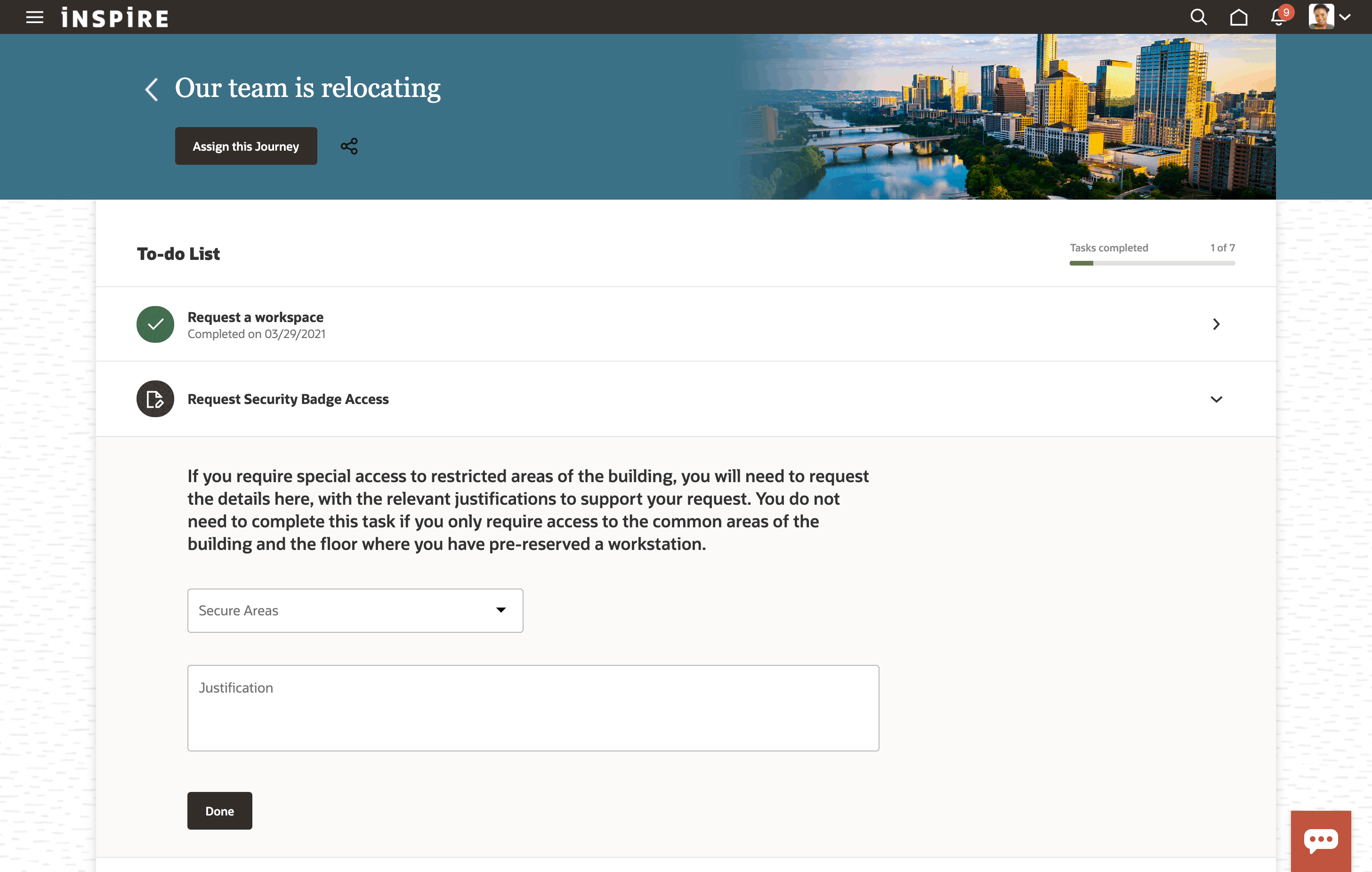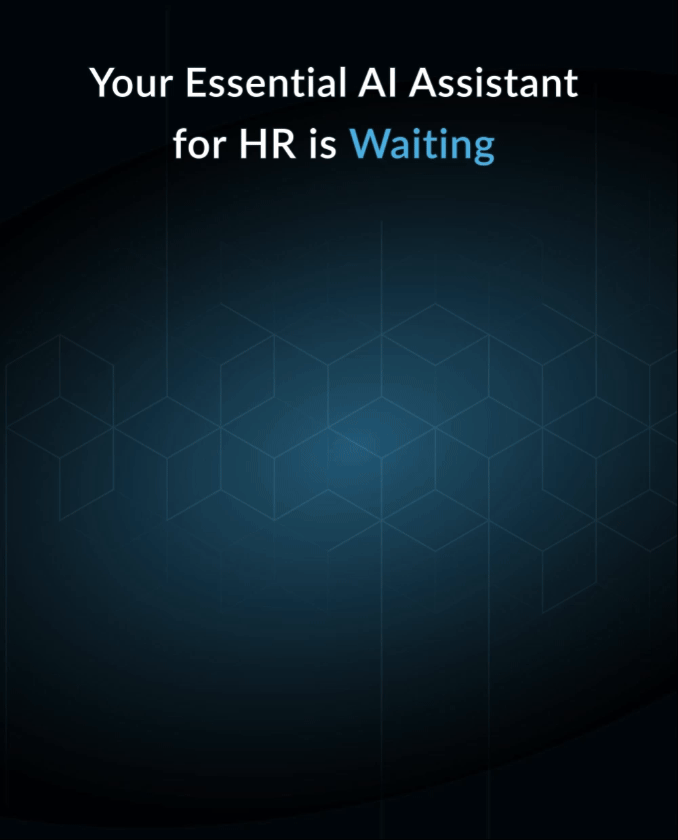Oracle Introduces Employee Experience Platform: War For Employee Journeys Gets Hotter
Oracle is a serious enterprise software company. I competed with Oracle in the 1980s and it was brutal. The company generated $39 Billion in revenue last year and made $15 Billion in operating profit, a metric most CFOs would die for. And over my 40+ years in tech, I’ve seen Oracle adapt to every technology and business cycle (from mainframe to client/server to web to cloud) and manage more than 100 acquisitions in the process.
Well, in the Human Capital market Oracle is now hot. After many years building Oracle E-Business Suite, acquiring PeopleSoft and Taleo, and then building Fusion middleware, the company is now offering one of the most integrated HCM platforms in the market. Oracle Cloud HCM, which is integrated into all of Oracle’s ERP products, now has more than 3,000 customers and is growing at 24% year over year. Its user experience is brand new (using the Oracle Redwood Design System), it has many advanced features, and it gets great reviews from customers.
But there’s more. Led by Larry Ellison’s unique ability to see the future, the company has an amazing way of spotting trends and is jumping on them. The Oracle Autonomous Database, for example, is a masterful combination of technology and marketing, designed to compete with the cloud data technologies sold by Google, Amazon, and Microsoft. When Oracle acquired Sun the company gained license to Java, setting Oracle’s near-permanent role in the world of IT. Even if you think Oracle databases are expensive or complicated, I doubt there are many IT departments that don’t have Oracle.
Well as Employee Experience becomes a big market (and Microsoft throws their weight at it), Oracle decided to go to war. This week Oracle is introducing its Employee Experience Platform, delivered through Oracle Journeys, a part of Oracle Cloud HCM. Unlike Workday’s People Experience or Successfactors HXM, it’s a workflow-enabling system more like ServiceNow.
If you look at the revenues of some of the big players in HCM: Workday’s market cap is $64 Billion yet ServiceNow is worth nearly $100 Billion. So Oracle’s goal is not just to compete with Workday, but also to replace ServiceNow. And using Oracle’s Integration Cloud Service (OIC), Oracle’s Journey tools can access non-Oracle applications.
Let me explain what Oracle has done.
First, understand that Oracle Cloud HCM is an end-to-end human capital application. It includes tools for recruiting, onboarding, talent management, learning, talent marketplace, compensation, time and labor, payroll, and an HR Help Desk. The platform includes employee social networking, wellbeing, benefits, and contract work management.
Led by Chris Leone (a seasoned Oracle executive) and architected by product leaders with experience at PeopleSoft, the platform does just about everything an HR department would want.
Over the years it grew in fits and starts as Oracle tried to build transition tools for PeopleSoft customers, but it’s now integrated and impressive in its capability. And big companies like JP Morgan Chase, Marriot, Deutsche Bahn, Kaiser Permanente, Hilton, Ford, Tesco, and Co-Op have signed up to use it. And many have more than 100,000 employees on the platform.
As an IT vendor, Oracle understood the need to build case management and self-service tools early on. I first saw Oracle’s HR self-service (AI-enabled digital assistant) and case management system more than four years ago, and I had a feeling it was going to be big. Today this layer of software has become mission-critical, and it is from that base that the team built Oracle Journeys.
Oracle’s Journeys: An Employee Experience Platform
Here is an overview of what Oracle just announced.
Oracle Journeys is an enterprise platform that lets companies manage and deliver personalized experiences for employees throughout their work life. There are three types of journeys available: work-related (e.g. returning to work, setting up a home office), career-related (celebrating an anniversary, moving to a new position), and personal (getting married, finding elder care, etc.).
You can design a new journey or edit and copy an existing one. You can also integrate non-Oracle applications (e.g. background checking, facilities management) and include routing and process automation in the platform. In many ways, this is a competitor to ServiceNow, but tightly integrated into Oracle Cloud HCM.
And as the market moves toward “Systems of Design,” as I described in HR Technology 2021, Oracle is positioned in the hottest part of the market.
 |
Here is how Oracle’s Journeys work, following up on ServiceNow’s announcements recently.
1/ Journeys LaunchPad
The first part of any employee’s experience at work is the “portal” or “employee app” that gives you access to service and support. Most companies build these portals and they often cost many millions of dollars to build and must be maintained continuously.
Oracle’s HCM customers get an HR Portal as well, and the platform starts through the Journeys LaunchPad.
 |
As you can see from this screenshot, the Journeys can be quite extensive. In fact, I’d call them apps, not journeys, because they can access back-end data and include branching and workflow.
From the Journeys LaunchPad employees see all their journeys in one place and discover new ones through a search bar. They can dive into a journey of interest by clicking on it, which will start their progress, or bookmark it for later.
Journeys appear in a number of ways. Managers or HR can share journeys or assign them to employees. For example, a manager might assign a “become a mentor” journey to an employee that has strong leadership potential, or a reward-focused journey to recognize outstanding performance.
Journeys can also be triggered by certain events, such as a “safe travels” journey based on an expense report for an upcoming flight, or recommended via AI running in the background. For example, a “personal development” journey may be recommended based on recent consumption of certain learning content.
The other important thing to note is that while the Journey LaunchPad provides the one-stop shop for all journeys, Oracle does not rely on employees to discover them on their own. A question submitted to the digital assistant—like “where can I find a mentor” can result in a recommendation to take a “career development” journey, with a prompt that brings them directly to that experience. Alerts via email and in the employee portal also notify individuals when a journey is assigned or recommended.
2/ Journeys Creator
To design these journeys, Journey Creator lets managers and HR design tailored experiences. You can design or clone a journey, add or reorder steps, establish dependencies, and publish all without the help of IT.
Journeys can go beyond checklists and tasks: they can include videos, links, verifications (ie. complete a COVID test or vaccination), and inline surveys. (ServiceNow calls this “Learning Posts.”) Journeys can also connect to third-party applications using packaged integrations ar APIs.
Unlike Microsoft Viva, Oracle Journeys can use HCM data to personalize or trigger journeys based on role, location, position, and other data. For example, an employee in one location may see a journey with specific information relevant to that country or department; another employee would see a different journey based on other departmental policies. (ServiceNow has similar functionality.)
 |
To make them easy to build, there are out-of-the-box journeys available immediately. These templates can be edited and replicated, similar to ServiceNow’s Journey Accelerator.
The company plans to include pre-built journeys that span HCM, Finance, Customer Experience, and Procurement. Imagine, for example. a journey that helps an employee set up an ergonomic home office, schedule a desk, or deal with a certain customer issue.
 |
3/ Journeys Booster
To integrate other applications and use process automation, Oracle is also introducing Journey Booster, which lets you bring in applications that extend beyond the Oracle Fusion Cloud system, making it truly supportive of multi-backend experiences. For example, a “back to work” journey could integrate with a badge reader system.
These are integrated with Oracle Process Cloud, a process management platform included in Oracle Cloud Customer Experience.
Market Impact
How does all this compare to the wide array of EX Products hitting the market? Let me give you some perspective.
Oracle Journeys vs. ServiceNow, Microsoft Viva, SuccessFactors, Workday, and Others
If you’re an Oracle customer or considering Oracle Cloud HCM, there’s no question in my mind you will want to use these services. Oracle’s Journeys can integrate with HCM data (ie. location, job level, role, and many other elements) and will run integrated in the Oracle interface. And if you are focused on automating your service center and improving self-service, this system may reduce the need for ServiceNow.
Obviously, there are still other options.
If you’re a Microsoft shop, you’ll very likely want to look at Microsoft Viva which gives you the benefit of leveraging your investment in SharePoint and Microsoft 365. Viva sits above the HCM system but leverages all your corporate identity and security infrastructure, and many HCM vendors are building Viva integrations.
If you’re building an end-to-end employee portal, you may want to look at Embark (WillisTowersWatson). Embark is an impressive new system that delivers a globalized end-to-end employee portal out of the box with content, configuration, and many third-party integrations.
If you’re a Workday or SuccessFactors customer, you’re going to want to use Workday People Experience or SAP WorkZone and SuccessFactors HXM. These other platforms are portal and journey-building tools for the alternative ERP platforms. (WorkZone integrates all the SAP employee applications into one system.)
And finally, if you’re a larger more complex company, you’ll probably also look at ServiceNow as a process, workflow, and journey tool that crosses multiple back-end systems. ServiceNow calls itself “a platform of platforms” because it is widely used to cross user needs across many back-end systems. (And recently announced deeper integrations with Qualtrics.)
Oracle’s Ambitious Move
This is an ambitious and aggressive product strategy for Oracle. Similar to Microsoft, Oracle has built developer tools for years. (Oracle’s database business is dependent on development tools.) So you can expect Oracle to build out more “system of design” features quickly.
As more and more companies focus their energies on “back to work,” and “safe workplace” applications for their employees, Oracle’s Journeys are positioned in the right place at the right time. And Oracle’s experience in service delivery and case management will pay off.
If there’s one thing I’ve learned about Oracle customers over the years it’s this. Once a company makes an Oracle decision they tend to go “all-Oracle” as fast as they can. The product set and pricing model encourages companies to use Oracle for everything. In the world of EX, where complexity is always the problem, this is a big value-add for anyone looking for an upgrade to their human capital system.
